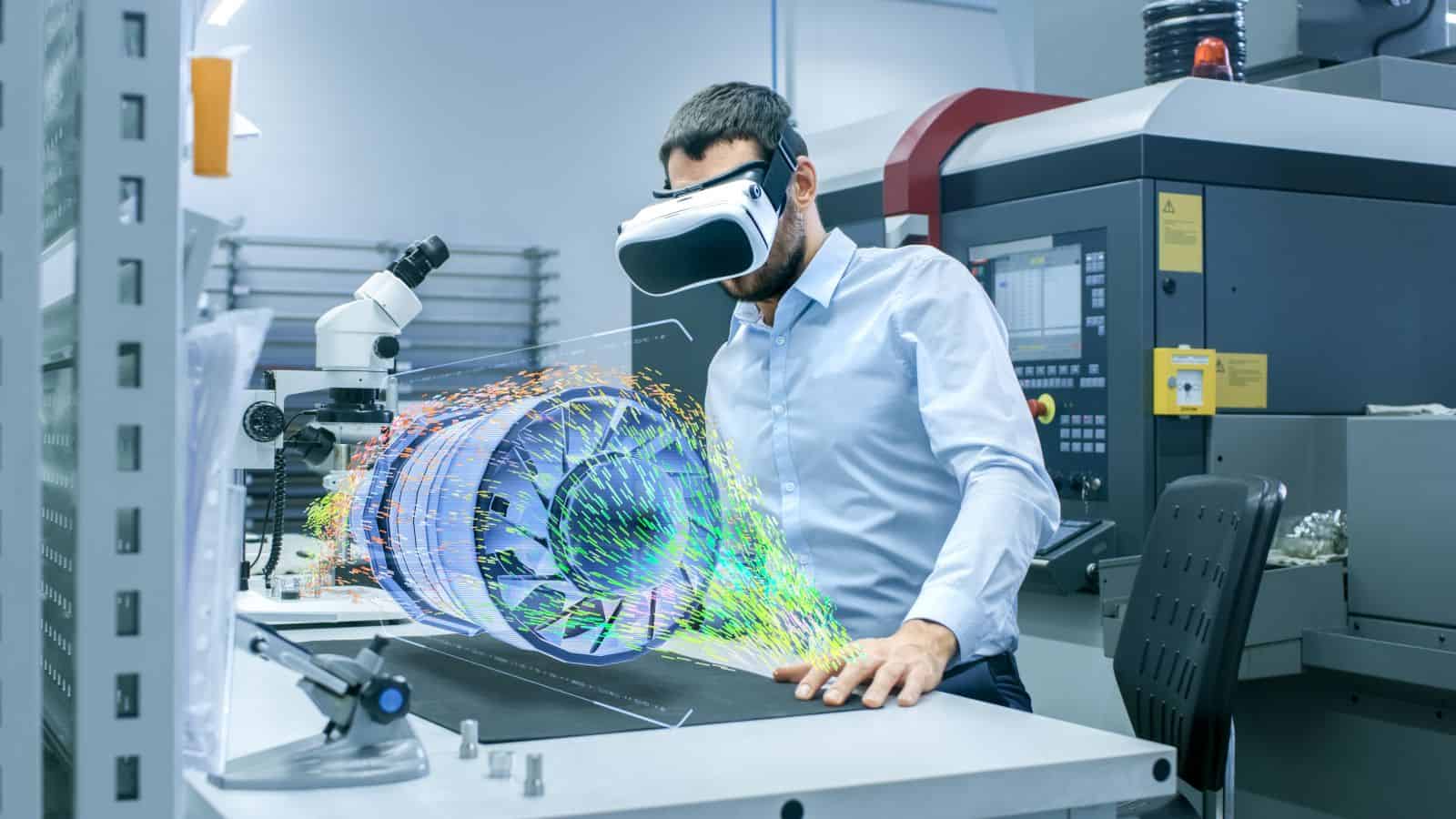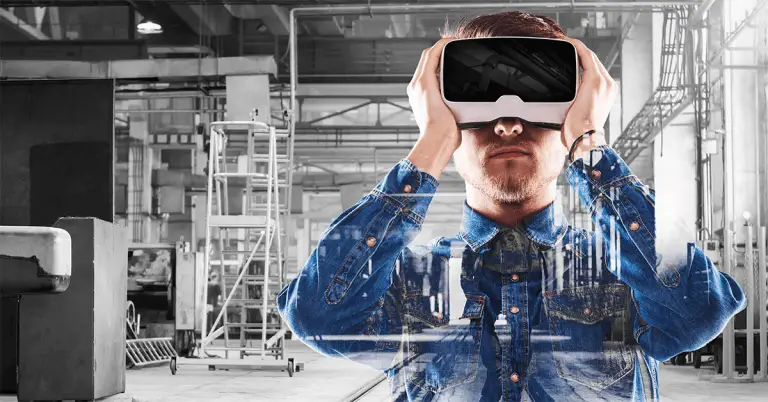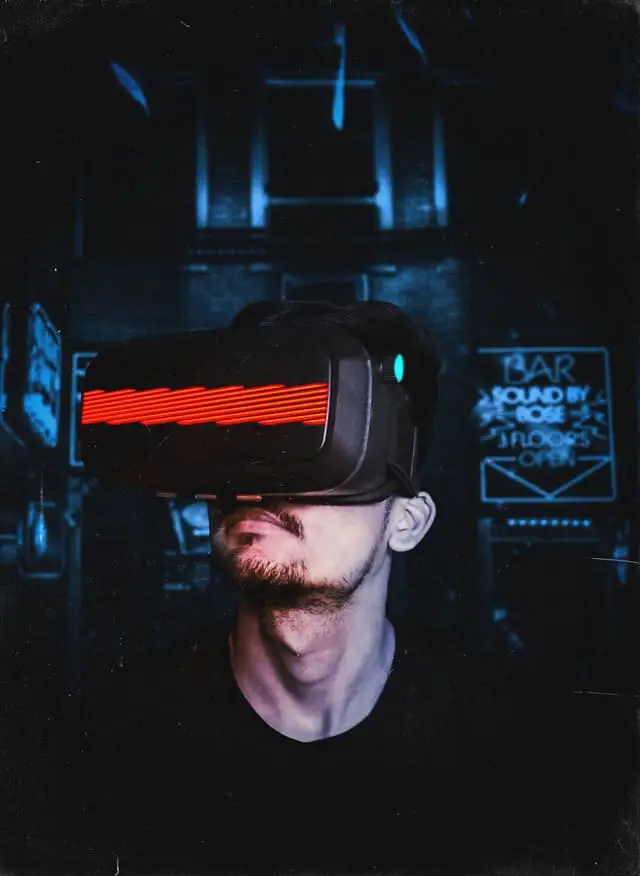Today’s technology moves at a rapid pace, propelling our lifestyles forward. While once we lived without smartphones, today, we can’t go anywhere without them. Another viable technology that has already begun shaping our future is known as virtual reality or VR. Exactly what is virtual reality?
Virtual reality is a type of immersive simulation that can be used to train, such as in the military or medical worlds, or entertain, such as VR video games. By wearing a headset, the virtual reality user gets thrown into another world. VR tech can go so far as to mimic sensations and sounds to add to the realism.
In this article, we’ll thoroughly explain virtual reality, including its history and how it works. We’ll even discuss how virtual reality is already used in the workplace in case you want to implement VR in your company.
Let’s begin!

Understanding Virtual Reality
As we said in the intro, virtual reality is a type of simulation. You can select from one of two types of virtual reality: mixed reality and augmented reality. Let’s talk about these more now.
Mixed reality or MR combines the virtual and real world into one, promoting real-time interactions. In the 1990s, Armstrong Laboratories through the U.S. Air Force produced the first known MR platform known as Virtual Fixtures. This system encompassed elements of touch, sound, and sight in one.
Augmented reality or AR takes real-life items and uses computer graphics and data to augment our olfactory, somatosensory, haptic, auditory, and visual senses in relation to these items.
Modern VR systems involve the user wearing a headset. This looks like an oversized pair of goggles and covers the eyes and nose. The headset straps in at both the sides and the top of the head. To add more interactivity to a virtual reality experience, users will often hold motion controllers.
Now, motion controllers have become very common, especially if you like video games. Such controllers as the Steam Controller, Nintendo Switch Joy-Cons, Xbox One Kinect, and DualShock for the PlayStation 4 all count as motion controllers. However, in a VR system, the controller you use won’t be the same as these household ones.
Besides motion controllers, virtual reality users may also wear VR gloves and get on omnidirectional treadmills to make the experience that much more lifelike.
A History of Virtual Reality
1960s
Now, you may ask, where exactly did virtual reality come from? While this is a hotly debated topic, it appears VR began in 1962. It was then that Morton Heilig created the Sensorama. This was based on his Experience Theatre concept, which he had founded a decade prior. The Sensorama machine looked sort of like a cross between a voting machine and something you’d see at the eye doctor. You sat down on a flat seat and leaned your head into an opening. There, you’d watch a movie that triggered your senses of touch, smell, sound, and sight.
Ivan Sutherland, Bob Sproull, and Sutherland’s other students had, by 1968, made a head-mounted VR display. This was the first of its kind. Of course, it wasn’t anything like today’s modern virtual reality headsets, but it was a start. The device went by the name the Sword of Damocles.
1970s
By the 1970s, VR really started taking off. Beginning in 1977, David Em’s work for NASA, specifically its Jet Propulsion Laboratory, saw him creating virtual worlds. MIT added to the contribution in 1978 with their Aspen Movie App. This virtual tour of Aspen, Colorado allowed users to experience the area in both winter and summertime.
Another milestone occurred in 1979. It was that year that Eric Howlett made the LEEP optical system, which stands for Large Expanse, Extra Perspective. The LEEP system offered a great field of view. LEEP got refined and picked up by NASA not too long after, soon making an appearance in their Virtual Interactive Environment Workstation or VIEW.
1980s
Virtual reality as a term spread in the 1980s, credited mostly to one of its pioneers, Jaron Lanier. As the founder of VPL Research, his company created such VR technology as the AudioSphere, the EyePhone (not to be confused with Apple’s iPhone, which came much later), and the DataGlove. The latter product went to Mattel, the makers of the Power Glove, a Nintendo peripheral that came out in the late ‘80s.
1990s
As video games and computers became more prevalent, the 1990s was a big decade for VR. Not one to be outdone by Nintendo, Sega made the Sega VR headset at the start of the decade. Like the Power Glove, the technology was primitive by today’s standards. Sega kept at it, though, and in 1994, introduced the Sega VR-1 motion simulator. This attraction, only available at arcade SegaWorld, included stereoscopic 3D and 3D polygons.
Nintendo answered with 1995’s Virtual Boy. Also in that decade, we had the CAVE, short for cave automatic virtual environment. This came from Electronic Visualization Laboratory and let a person look at their own body while in a VR simulation.
2000s and 2010s
While VR technology didn’t evolve much from the 2000s, in 2010, that all changed with the creation of the Oculus Rift. Made by Palmer Luckey, he and his team worked on the Rift until it was ready for video game show E3 by 2012. Facebook bought the creation by 2014 for millions of dollars.
Today, many companies have hopped on the VR train and are riding it for all it’s worth. These include:
· HTC and its HTC Vive SteamVR headset
· Samsung and its Samsung Gear VR
· Sony and its PlayStation VR
· Microsoft, which has a series of VR headsets and related products
· Oculus Virtual Reality
· Google and its Google VR with Google Daydream headsets
· Facebook and its Facebook 360
Virtual Realty in the Workplace
VR is about way more than just video gaming. There are a slew of companies out there producing workplace virtual reality solutions. They are:
· STRIVR , which started with VR in athletics but has since grown to encompass other areas
, which started with VR in athletics but has since grown to encompass other areas
· Online Induction , a company that specializes in VR training modules
, a company that specializes in VR training modules
· Yeppar , which enhances productivity and businesses processes through VR and is based out of India
, which enhances productivity and businesses processes through VR and is based out of India
· Galivac , which has employee assessment and recruitment VR solutions
, which has employee assessment and recruitment VR solutions
· 360immersive , a company that has VR-based training for areas like workplace safety and disaster intervention
, a company that has VR-based training for areas like workplace safety and disaster intervention
How can your company implement virtual reality into your workplace?
You have many options.
Enhance Customer Interactivity for Better Customer Service
While no one can spend 24/7 at the office, virtual reality can fill in the gaps. A VR system allows your employees to communicate with customers as needed from wherever they are. This improved customer service will lead to more customer satisfaction.
Assist with Recruiting and Hiring
Video interviewing may be the future of recruitment. The interactivity of these videos through virtual reality makes them almost as good as the real deal. You could even make a hiring decision after a VR meeting.
Foster a More Connected Office Environment
Besides just recruiting and hiring, this video technology can also bring your company together. If you have freelancers or employees who work from home, everyone can gather together for meetings and more without having to all be physically present.
Improve Employee Training
Undoubtedly, one of the biggest areas in which virtual reality shines in the workplace is when it comes to employee training. Most of the time, offices that train employees will have them watch videos, read through materials, and maybe shadow another employee for a few days. Now, training can become more interactive. The employee can engage in a simulation and get a real feel for how their job is done. (Check out our related article – 10 Ways Virtual Reality Can Boost Workplace Productivity )
)
In areas like medical, space, and firefighting, this VR technology can prove invaluable. Imagine learning how to save the life of a patient but facing no real consequences if you make a mistake or fail. Now picture the heat and pressure of fighting a fire, but it’s all a virtual demonstration. Virtual reality can make workplace training more effective, thus producing better employees.
Related Questions
How much does virtual reality cost? All those benefits don’t come free, of course. According to a 2016 article in Business Insider , computers for virtual reality may cost $1,000 and up. Headsets aren’t cheap either. The Oculus Rift was priced at $799 in 2016 and the Vive from HTC $599. Today, the Rift is cheaper at $399 but the Vive costlier at $799.
, computers for virtual reality may cost $1,000 and up. Headsets aren’t cheap either. The Oculus Rift was priced at $799 in 2016 and the Vive from HTC $599. Today, the Rift is cheaper at $399 but the Vive costlier at $799.
That means you might invest roughly $2,000, probably even more, into an HR system per person or employee.
Can virtual reality be dangerous? Indeed, there are some side effects tied to the use of virtual reality systems. Some people report nausea, headaches, and eye strain after using a VR headset. Others have said they get motion sickness from virtual reality.
Other side effects to watch out for include:
· Seizures
· Disorientation
· Dizziness
· Spatial awareness loss
Most of those side effects will fade once you stop wearing the headset. Seizures though can be very serious. Many doctors will caution you to reconsider whether you should use VR, as it could cause seizures close to every time you do.
There is of course also the risk that you can trip or fall into something if you’re not careful. After all, with how immersive VR is, you sometimes forget these digital surroundings aren’t your real ones. You can also risk hitting someone who’s too close. For those reasons, it’s best to use a VR system in an open environment without anyone nearby.


